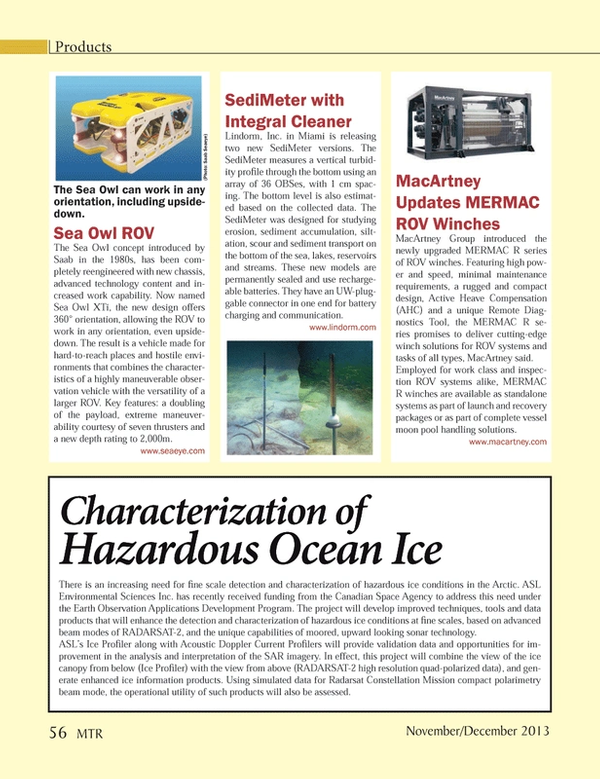
Project Launched to Better Detect Ocean Ice Hazards
There is an increasing need for fine scale detection and characterization of hazardous ice conditions in the Arctic. ASL Environmental Sciences Inc. has recently received funding from the Canadian Space Agency to address this need under the Earth Observation Applications Development Program. The project will develop improved techniques, tools and data products that will enhance the detection and characterization of hazardous ice conditions at fine scales, based on advanced beam modes of RADARSAT-2, and the unique capabilities of moored, upward looking sonar technology.
ASL’s Ice Profiler along with Acoustic Doppler Current Profilers will provide validation data and opportunities for improvement in the analysis and interpretation of the SAR imagery. In effect, this project will combine the view of the ice canopy from below (Ice Profiler) with the view from above (RADARSAT-2 high resolution quad-polarized data), and generate enhanced ice information products. Using simulated data for Radarsat Constellation Mission compact polarimetry beam mode, the operational utility of such products will also be assessed.
(As published in the November/December 2013 edition of Marine Technology Reporter - www.seadiscovery.com)
Read Project Launched to Better Detect Ocean Ice Hazards in Pdf, Flash or Html5 edition of November 2013 Marine Technology
Other stories from November 2013 issue
Content
- Help Build the "Space Station of the Sea" page: 10
- Makai Continues Energy Research in Hawaii page: 12
- Fugro’s Offshore Wind Farm Drill Ready page: 14
- Dr. Jennifer Brower, Prometheus page: 18
- Bourbon: Offshore Seismic Survey Vessel Success page: 22
- The Rise of the Work-class ROV Market page: 30
- Brazil Offshore: Petrobras & Subsea Engineering page: 34
- Offshore Energy: Monitoring Performance page: 42
- Sea Owl ROV Revamped page: 56
- New SediMeter Features Integral Cleaner page: 56
- MacArtney Updates MERMAC ROV Winches page: 56
- Project Launched to Better Detect Ocean Ice Hazards page: 56
- New AQUAlogger Aids Ocean Data Recording page: 57
- Triton Subs in Fort Lauderdale page: 57
- LVDT Linear Position Sensors Survive Operation Underwater page: 57
- Vectron Measures Tide Speeds page: 58
- Kraken Debuts AquaPix MINSAS page: 58
- Updated SeaLite Sphere LED Light page: 58
- OSIL Launches Fracking Water Monitor page: 59
- Stand-Alone Mosaicking Module Introduced page: 59
- OSIL Giant Snow Catchers Used for NERC Research page: 59
- Immersion Suit Drying System Ordered page: 59


